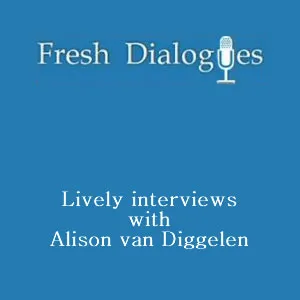BBC Report: The Vast Potential of Nobel Prize Blue LEDs
- Author
- freshdialogues
- Published
- Fri 12 Dec 2014
- Episode Link
- https://www.freshdialogues.com/2014/12/12/bbc-report-the-vast-potential-of-nobel-prize-blue-leds/
This week, UC Santa Barbara’s Professor Nakamura (and two colleagues in Japan) received the Nobel Prize for Physics. Their big breakthrough? The Holy Grail of material science for many years: Blue LED technology. It not only enables high efficiency lighting (goodbye Edison’s incandescent bulbs, hello backlit smartphones, and 2300 feet headlights); but one day soon will help double the range of hybrid cars (thanks to its power switching applications).
Today BBC’s Tech Tent aired my interview with Professor Steven DenBaars, research partner to Professor Nakamura at UCSB.
A version of this story aired on BBC’s Tech Tent on Dec. 12, 2014. Listen to the podcast below:
http://www.freshdialogues.com/wp-content/uploads/2014/12/ucsb-story-dec-2014.mp3
To give you a sense of just how energy efficient these LED lightbulbs are, Prof DenBaars claims that if everyone in the United States replaced their old bulbs with LEDs, it would reduce the country’s electric light bill from $100 Billion to $20 Billion. Impressive.
Sweden’s Per Delsing gives it a global perspective: “A quarter of all energy consumption goes to illumination,” he said at the Nobel Prize press conference. As a result, any increase in efficiency and consequent saving of energy “is really going to have a big impact on modern civilization.”
While reporting for the BBC, I got a fascinating tour of UCSB’s Solid State Lighting and Energy Center and a chemistry lesson from Steven Griffiths, a grad student researcher. His colleagues Sang Ho Oh and Daniel Becerra also contributed valuable background information (see below for more photos).
Here’s a transcript of my conversation with Prof Denbaars (aka: all you ever wanted to know about LEDs but were afraid to ask):
Alison van D: I’m here at the Uni of California Santa Barbara with the research team led by Prof Nakamura, the winner of this year’s Nobel prize for Physics. He earned the Nobel Prize for his blue LED breakthrough. I want to talk with Dr Steven Denbaars who is a research partner of the professor and start with the basics. What is an LED?
Prof DenBaars: An LED stands for a light emitting diode, it’s basically a semiconductor crystal which glows bright light, in this case, bright blue light when you apply electrical current to it.
van D: Can you explain how they’re used in smartphones, computer screens and in lighting?
Prof D: OK in smartphones the LED is used in combination with a phosphor on top of it to generate white light. That is, the blue is converted with a red and a green phosphor to produce a full spectrum of white light. That is the white light in your flashlight, you know when you take a picture, but it’s also the white light in back of your LCD screen. So it’s called the backlight. So all smart phones today use LED backlighting to do energy efficient displays.
van D: And tell me about the lighting aspect. Is it just the LED bulbs you find at the supermarket, is that the only application for LEDs in the lighting sphere?
Prof D: Well that was the initial implementation, a bulb replacement or retrofit. But what we’re seeing is: now you can use the LED to add additional features to lighting, such as communications. That is, you can have your cell phone control the color of the light bulb or even communicate information between the light bulb and your cell phone or maybe even your Internet server to distribute information into the house. That’s just starting. We call that smart LED lighting.
van D: So can you explain how that works? You get an app on your phone and you can change the mood lighting of your home?
Prof D: Yes, you can change the color temperature from a sunset to a cold day in Sweden, maybe, I guess. 6500 Kelvin would look very bluish white…That is using the Bluetooth feature on your iPhone that communicates with the chip in the light bulb, which then changes the mix of the colors in the LED.
van D: Can you talk about the particular [...]
